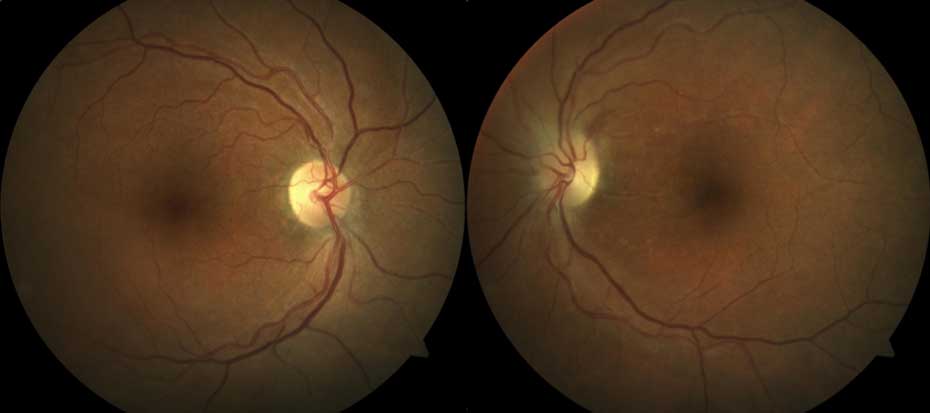An 83-year-old female presents to your office with acute vision loss in her left eye. On exam, best-corrected visual acuities are 20/30 and HM in the right and left eyes, respectively. Her posterior segment exam is shown below. She also notes a recent history of fatigue, weight loss, and headaches over the last month. ESR is significantly elevated.
Introduction
Objectives
- To review epidemiology, pathogenesis, and diagnosis of giant cell arteritis
- To review treatment options for giant cell arteritis, with a focus on the administration of corticosteroids
- To review the technique of temporal artery biopsy
Case

Quick Question
What is the MOST important next step in management?
-
Start aspirin
Although some experts feel aspirin reduces the incidence of ischemic complications from GCA, it is far less important than initiation of corticosteroid treatment to preserve vision in the contralateral eye.
-
Urgent temporal artery biopsy
Temporal artery biopsy should be done at some point in this case over the following several weeks, however it must be stressed that GCA is a clinical diagnosis with the role of biopsy being confirmatory.
-
Next day consult to a neuro-ophthalmologist
Failure to immediately initiate corticosteroid treatment could result in irreversible blindness in the contralateral eye.
-
Immediate initiation of corticosteroid treatment
CORRECT
Introduction
Giant cell arteritis (GCA) is a relatively common autoimmune disease characterized by inflammation of blood vessels (vasculitis), particularly medium and large arteries. The term “giant cell” refers to the characteristic finding of multinucleated giant cells on histopathology. It affects mainly the external carotid artery and its branches, and frequently results in ophthalmologic manifestations.1 Because of the life threatening nature of the disease and its frequent presentation to eye care physicians, a thorough understanding of the disease is critical to optometrists and ophthalmologists.
The clinical manifestations of giant cell arteritis were first described in the 10th century by an Iraqi physician, who noted the relationship between inflamed arteries and muscle/visual symptoms.2 It was not until 1932 that the characteristic pathological changes of the disease (mainly granulomatous inflammation with multinucleated giant cells) were described by Horton (the term “Horton disease” is still used today).3
While “giant cell arteritis” is the preferred name for the disease, multiple other terms exist including Horton disease (see above), thrombotic arteritis, granulomatous arteritis, cranial arteritis, and temporal arteritis.2 The latter term is avoided as the temporal artery is only one of a number of vessels affected by the disease. Likewise, the term “cranial arteritis” is inaccurate as the disease most often affects extracranial as opposed to cranial vessels.
Access Full Case Content
Get full access to the content of this case. Purchase this case now for $29. Plus, save when you buy 3 cases.